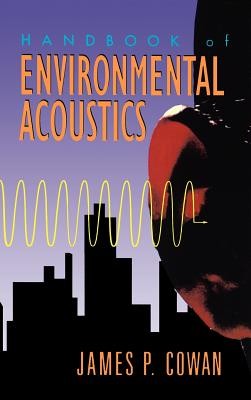
- We will send in 10–14 business days.
- Author: James P Cowan
- Publisher: John Wiley & Sons, Inc.
- ISBN-10: 0471285846
- ISBN-13: 9780471285847
- Format: 16 x 23.7 x 2.3 cm, kieti viršeliai
- Language: English
- SAVE -10% with code: EXTRA
Reviews
Description
Because environmental acoustics has a complex mathematical basis, it is often difficult to determine whether acousticalrecommendations are valid. Handbook of Environmental Acousticssimplifies this decision-making process and provides easy-to-followexplanations of acoustic terminology, noise control design, andregulatory noise issues. The book clarifies key aspects ofenvironmental noise in basic language, covering:
* Common noise sources--including the risk of exposure to commondaily environmental noise sources
* Current noise regulations, guidelines, andstandards--illustrating all key points
* Acoustic terminology and environmental noisedescriptors--providing a foundation for understanding noiseissues
* Effects of noise on people and animals--emphasizing theimportance of restricting noise exposure
* Relevant noise rating methods--clarifiying the use of noisemetrics
* Construction and building code requirements--explaining currentrequirements and featuring tips on how to avoid privacyproblems
* Measurement considerations--demonstrating standard methods andoffering practical advice on how to ensure proper measurementprocedures
* Noise control designs--detailing source-path-receiver systems andnoise control fundamentals
In addition to traditional noise control methods, new areas, suchas active noise control, sound intensity measurement, and diffusivedesigns, are explained. A sample municipal noise ordinance helpsthe user to draft an ordinance tailored to the needs of aparticular community. Avoiding complex mathematics and analyses, Handbook of Environmental Acoustics is a user-friendly manual forurban planners, municipal officials, engineers, attorneys, industrial hygienists, architects, environmental professionals, andstudents in these fields.
EXTRA 10 % discount with code: EXTRA
The promotion ends in 21d.04:27:13
The discount code is valid when purchasing from 10 €. Discounts do not stack.
- Author: James P Cowan
- Publisher: John Wiley & Sons, Inc.
- ISBN-10: 0471285846
- ISBN-13: 9780471285847
- Format: 16 x 23.7 x 2.3 cm, kieti viršeliai
- Language: English English
Because environmental acoustics has a complex mathematical basis, it is often difficult to determine whether acousticalrecommendations are valid. Handbook of Environmental Acousticssimplifies this decision-making process and provides easy-to-followexplanations of acoustic terminology, noise control design, andregulatory noise issues. The book clarifies key aspects ofenvironmental noise in basic language, covering:
* Common noise sources--including the risk of exposure to commondaily environmental noise sources
* Current noise regulations, guidelines, andstandards--illustrating all key points
* Acoustic terminology and environmental noisedescriptors--providing a foundation for understanding noiseissues
* Effects of noise on people and animals--emphasizing theimportance of restricting noise exposure
* Relevant noise rating methods--clarifiying the use of noisemetrics
* Construction and building code requirements--explaining currentrequirements and featuring tips on how to avoid privacyproblems
* Measurement considerations--demonstrating standard methods andoffering practical advice on how to ensure proper measurementprocedures
* Noise control designs--detailing source-path-receiver systems andnoise control fundamentals
In addition to traditional noise control methods, new areas, suchas active noise control, sound intensity measurement, and diffusivedesigns, are explained. A sample municipal noise ordinance helpsthe user to draft an ordinance tailored to the needs of aparticular community. Avoiding complex mathematics and analyses, Handbook of Environmental Acoustics is a user-friendly manual forurban planners, municipal officials, engineers, attorneys, industrial hygienists, architects, environmental professionals, andstudents in these fields.


Reviews